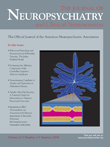Disruption of Nicotine Addiction Associated With Paroxysmal Hypersomnia
To the Editor: It has been recently reported that brain damage involving specific cortical regions can lead to disruption of nicotine addiction. 1 We present a case of a highly dependent smoker with a right thalamic lesion who stopped smoking after an episode of paroxysmal hypersomnia.
Case Report
A 54-year-old right-handed man with various cardiovascular disorders and excessive daytime sleepiness was diagnosed with a dissociative disorder at a peripheral hospital. In 2007, the patient self-referred to our center for further psychiatric evaluation.
A detailed medical interview revealed a 4-year history of paroxysmal hypersomnia related to stressful life events and lasting up to 72 hours. The first episode was presumably associated with symptoms of stroke, including persistent left hemisensory syndrome and mild reversible hemiparesis. The symptoms were attributed to the patient’s dissociative disorder and a CT scan was not performed. Each subsequent episode resulted in various cognitive and behavioral abnormalities, including retrograde amnesia and aggressive behaviors. An episode in 2005 was followed by rapid, easy, and permanent smoking cessation as well as partial loss of olfactory and gustatory identification abilities. The patient experienced symptoms of nicotine abstinence (irritability, depressed mood, increased appetite, and weight gain), but he did not feel nicotine craving even in the presence of other smokers.
The patient started smoking regularly when he was 15 and used to smoke up to 30 cigarettes per day. He was highly dependent on nicotine according to ICD-10 and DSM-IV criteria. His previous attempts to quit smoking with large quantities of nicotine replacement therapy were unsuccessful because of severe withdrawal symptoms.
On examination, the patient presented sensory deficits from the CN V, elevated taste threshold in the areas innervated by the CN VII and CN IX, elevated olfactory threshold, and taste and smell identification deficits. The above abnormalities were largely limited to the left nasal cavity and left side of the oral cavity. The EEG at admission did not show any pathological changes. The EEG recorded during another episode of hypersomnia showed slowing of the background activity, paroxysmal bursts of theta activity, and voltage suppression associated with sleep apnea of central origin (Apnea-Hypopnea Index: 44.7 events/hour). All laboratory tests were normal. A CT scan showed an old ischemic lesion in the right lateral thalamus. MRI scans were not performed because of the presence of a pacemaker. Psychiatric examination excluded a dissociative disorder and revealed no major psychopathology except mood lability.
Discussion
This is the first report of rapid disruption of nicotine addiction associated with paroxysmal hypersomnia and chemosensory deficits. A disruption of nicotine addiction, defined as the ability to quit smoking easily, immediately, without relapse, and without experiencing nicotine craving, has been recently linked to brain damage involving the insular cortex. 1 The history of our patient and previous reports 2 suggest that hypersomnia can be triggered by thalamic lesions. Although the thalamus has also been linked to chemosensory functions 3 and nicotine dependence, 4 a causal relationship between the thalamic lesion and smoking cessation in our patient cannot be firmly established.
1. Naqvi NH, Rudrauf D, Damasio H, et al: Damage to the insula disrupts addiction to cigarette smoking. Science 2007; 315:531–534Google Scholar
2. Huang YS, Guilleminault C, Kao PF, et al: SPECT findings in the Kleine-Levin syndrome. Sleep 2005; 28:955–960Google Scholar
3. Doty R (ed): Handbook of Olfaction and Gustation. New York, Marcel Dekker, 2003Google Scholar
4. Rose JE, Behm FM, Salley AN, et al: Regional brain activity correlates of nicotine dependence. Neuropsychopharmacology 2007; 32:2441–2452Google Scholar



